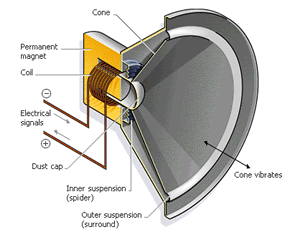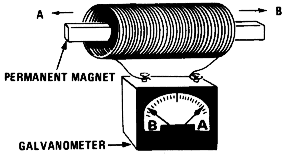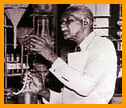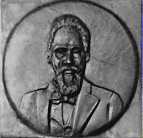In the history of electricity, no single defining moment exists. The way we produce, distribute, install, and use electricity and the devices it powers is the culmination of nearly 300 years of research and development.
Efforts to understand, capture, and tame electricity began in the 18th century. For the next 150 years, dozens of "natural scientists" in England, Europe, colonial America, and later the United States analyzed electricity in nature, but producing it outside of nature was another matter.
That didn't happen on any large scale until the late 19th century. Setting the stage for widespread commercial use of electricity were international researchers engaged in pure scientific research, and entrepreneurial businessmen who made their own major discoveries or produced, marketed, and sold products based on others' ideas.
Prominent contributors to today's electrically energized world (listed in alphabetical order) include:
* Andrè-Maire Ampére (1775-1836), a French physicist who developed the Systéme International d'Unités (SI).
* Alexander Graham Bell (1847-1922), inventor of the telephone. A mostly home-taught member of a Scottish family interested in issues of speech and deafness, Bell followed his father, Alexander Melville Bell, as a teacher of the deaf. In the 1870s, funded by the fathers of two of his students, Bell studied how electricity could transmit sound.
* Ferdinand Braum (1850-1918), a German physicist who shared a Nobel Prize with Guglielmo Marconi for contributions to the development of radiotelegraphy.
* Henry Cavendish (1731-1810), a reclusive, unpublished English scientist whose work was replicated several decades later by Ohm.
* Thomas Doolittle, a Connecticut mill worker who, in 1876, devised a way to make the first hard-drawn copper wire strong enough for use by the telegraphy industry, in place of iron wire. The young commercial electric and telephone industry quickly took advantage of the new wire.
* Thomas A. Edison (1847-1931), the most productive electrical explorer. He invented the electric light bulb and many other products that electricians use or install.
*Benjamin Franklin (1706-1790), an American diplomat and natural philosopher, he proved that lightning and electricity were the same.
* Luigi Galvani (1737-1798), an Italian physician and physicist, his early discoveries led to the invention of the voltaic pile.
* Guglielmo Marconi (1874-1937), an Italian physicist who won the Nobel Prize for his invention of a system of radiotelegraphy.
* Georg Simon Ohm (1789-1854), a German physicist and the discoverer of Ohm's Law, which states that resistance equals the ratio of the potential difference to current.
* Nikola Tesla (1856-1943), a Serbian-American inventor who discovered rotating magnetic fields. George Westinghouse purchased Tesla's patent rights.
* Alessandro Giuseppe Antonio Anastasio Volta (1745-1827), an Italian physicist who invented the electric battery. The electrical unit "volt" is named for Volta.
* George Westinghouse (1846-1914), an able adapter of other people's research, purchased their patents and expanded on their work. His first patent was received for a train air brake. In 1869, he formed the Westinghouse Air Brake Company. Eventually, he held 360 patents and founded six companies. He lost control of his companies in the 1907 panic, but went on working for them for another three years.
The experiences of electricity's founding fathers parallel in many ways the electronic technology breakthroughs of the past half-century that have brought us a whirlwind of innovation in computer hardware, software, and Internet communications. Just as a wave of electrical inventions dramatically changed the world as the 20th century progressed, so can we anticipate a steadily escalating rate of innovation in these emerging electronic disciplines beyond the dawn of the 21st century.
Emergence of a profession
Edison, Westinghouse, and other inventors and builders of electrical equipment competed to show the wonders of their new inventions. In 1881, Lucien Gaulard of France and John Gibbs of England arranged the first successful alternating-current electrical demonstration in London.
Expositions and world's fairs became popular places to showcase new inventions involving electricity. Almost as soon as they moved from the drawing board to operational status, electrical devices and systems were on display, to the delight of admiring crowds throughout the United States, England, and Europe.
Electricians were hired to build and operate these installations. The first successful use of electricity at one of these events occurred at the 1889 Paris Exposition. Four years later, the 1893 Columbian Exposition in Chicago used 10 times more electricity than the Paris Exposition. Says David E. Nye in Electrifying America (MIT Press, 1997):
"The Chicago fair employed 90,000 Sawyer-Mann incandescent lamps using alternating current, installed by Westinghouse for $5.25 each, and 5,000 arc lights installed by General Electric. To understand what these figures meant, consider that in 1890 there were only 68,000 arc lights and 900,000 incandescent lamps in the entire United States."
Columbian Exposition visitors could ride on or see electrified sites that included three cranes, elevators in some buildings, water fountains, an on-site railroad/streetcar system built by General Electric, and moving sidewalks.
Organizers of the electricity-themed 1901 Pan-American Exposition in Buffalo, N.Y., were challenged to improve on the Columbian Exposition.
Two of the Pan-American Exposition's buildings were dedicated to electricity. The 400-foot Electric Tower, studded with 40,000 lights; and the Electricity Building, with a display of electrical appliances.
Meanwhile, electricity had made an appearance at the annual expositions held from 1857 to the late 1890s in St. Louis, Mo., then the fourth-largest city in the United States. The St. Louis Agricultural and Mechanical Fair took place each summer at Fairgrounds Park on the city's north side, and each winter in the Exposition and Music Hall in downtown St. Louis.
Organizing the profession
Electricians meeting in conjunction with these expositions in St. Louis and Buffalo found enough in common to form the International Brotherhood of Electrical Workers (IBEW) and the National Electrical Contractors Association (NECA).
In the fall of 1890, experienced linemen and wiremen working on the St. Louis Agricultural and Mechanical Fair met to share common professional experiences. A year later, on November 21, 1891, 10 electricians representing about 300 workmen in eight cities met and formed the IBEW. The group included three from St. Louis and one each from Chicago; Indianapolis and Evansville, Ind.; Duluth, Minn.; Toledo; Philadelphia; and Milwaukee.
At about the same time, electrical contracting firms in Buffalo, New York City, Rochester, Syracuse, and Utica formed the United Electrical Contractors Association of New York State. This association invited electrical contracting firms from all over the United States to a meeting on July 17, 1901, at the New York State Building at the Pan-American Exposition in Buffalo. Forty-nine men came from 18 cities in eight states, including nine from St. Louis, two each from Detroit and Philadelphia, and one each from Baltimore, Boston, Cleveland, Minneapolis, and Pittsburgh. From this meeting, displaying the latest advances in electrical use, NECA emerged.
NECA's longtime members
Although some of the companies involved in NECA's formative years have gone into other lines of business and/or have been absorbed into other companies, a number of others remain active in the electrical-contracting business today. Century-old electrical-contracting firms with longtime NECA include:
* Hatzel & Buehler, Inc., of New York City was founded by John D. Hatzel and Joseph Buehler, master electricians at Thomas A. Edison's Pearl Street generating station, in 1884, to offer outside and inside wiring. J.D. Hatzel attended NECA's founding meeting and served as a NECA president. In the early 1930s, the grandfather of current Hatzel & Buehler president William A. Goeller purchased the firm from John Hatzel's estate.
* Herbert A. Holder Company, Inc., of Boston, was founded in 1892 by Herbert A. Holder Sr. "Holder is Boston's oldest union shop," says Michael Grable, vice president and general manager. For 80 years, it was located on Broad Street in the center of Boston's financial district." Herbert A. Holder Jr. inherited the company from his father. About 1970, Willard Bain, my father-in-law and a longtime Holder employee, asked to purchase the company." Today Willard's son, Paul W. Bain, serves as president and shares management responsibilities with Grable.
* Briner Electric Company of St. Louis opened when Charles J. Briner founded the company in 1895. In 1897, he and his brother, Fred E. Briner, formed a partnership-C.J. and F.E. Briner Electric Company. In 1902, the Briners formed a separate partnership that today would be called a joint venture with William Koeneman, John Casey, and William and Louis Nolker, creating Guarantee Electric Company for the specific purpose of working on the 1904 St. Louis World's Fair. After the World's Fair, William Koeneman bought out his partners to gain control of Guarantee.
Briner Electric continued as a separate company, which the Briner family sold in 1962 to Thomas J. Fogarty and Paul Lyons. Briner Electric now is owned and operated by Fogarty's sons, T. Michael Fogarty, president; and his younger brother, John J. Fogarty, vice president.
* An employee, Fred J. Oertli, purchased Guarantee from the family of William Koeneman in 1946. Today his sons direct Guarantee, Fred G. "Junior" Oertli, as vice chairman, and his younger brother, Charles W. "Chuck" Oertli, chairman and chief executive officer.
* Jack Enright and Theodore H. Joseph founded E-J Electric Installation Co. of New York City, in 1899. Jack Enright died in 1913. Jac Mann became Joseph's partner; today members of Mann's family le ad the company. For more information on E-J Electric, see Electrical Contractor, June 1999.
* One early contracting firm lasted to celebrate its centennial but has since gone out of business. Henry Newgard & Co. of Chicago was founded in 1882. In an early advertisement, Newgard described its services as "installer of electric lights, speaking tubes, electric bells, burglar alarms, and gas lighting." The firm ceased operations in the mid-1990s.
Corporate Pioneers
Following is a representative sample of the oldest power companies and manufacturers of electrical supplies:
* Siemens AG, of Münich, Germany, was the first of several companies founded by Carl, Werner, and Wilhelm Siemens. The firm was established in 1847 as Siemens & Halske OHG. Today Siemens AG is an electrical-engineering and electronics company.
* General Cable Corporation, of Highland Heights, Ky., was incorporated in New Jersey in 1927. General Cable brought together the assets of several companies formed in the 19th century, including Phillips Wire and Safety Company and George Westinghouse's Standard Underground Cable Company. Companies that became part of General Cable supplied insulated cable in 1844 to Samuel Morse; wire to the Statue of Liberty in 1886 (and again in 1986), 145 miles of cable that contractors laid under New York City sidewalks in 1892, and 3,000-volt cable for Chicago's 1893 Columbia Exposition.
* Pacific Gas and Electric Co., based in San Francisco, Calif. PG&E is the result of mergers involving dozens of companies, including a number that started selling gas. As electricity became available, they sold it, too. In 1852, Peter and James Donahue founded San Francisco Gas Company, the city's first gas supplier. Oakland Gas Light, founded by John A. Britton in 1855, established a small electrical plant in 1877 and changed its name to Oakland Gas and Light Company. In June of 1879, George H. Roe formed California Electric Light Company, the first exclusively electric firm in the PG&E family of companies.
* In 1901, Britton and Roe's companies merged to form California Gas and Electric Corporation. In 1890, with the backing of J.P. Morgan, Edison started studying expansion into California. Roe went to New York and purchased the right to use Edison's patents within a 100-miles radius of San Francisco.
* Westinghouse Electric Company, one of 56 companies (including Rockwell International) founded by George Westinghouse. In 1885, Westinghouse imported a Gaulard-Gibbs transformer from England and an AC generator from Siemens Brothers, the English subsidiary of Siemens AG. He and his engineers modified this equipment and proved the economic value of his alternating-current concept over Edison's direct-current system. As an experiment, Westinghouse electrified the small village of Barrington, Mass., for two weeks in 1886.
*Westinghouse subsequently grew to become one of the world's largest companies, but it has suffered financial embarrassment and many divestitures. The firm's three remaining divisions are Westinghouse Electric Co., which provides products and services for the nuclear-power industry; The Westinghouse Government Service Co., a United States Defense Department subcontractor; and The Westinghouse Government Environmental Service Company, based in Monroeville, Pa.
* Thomas A. Edison and a number of investors founded General Electric Light Bulb Company/Edison General Electric Company in 1887, to promote and sell electric light bulbs. In 1892, the assets of General Electric Light Bulb and other Edison companies were acquired for the newly incorporated General Electric Company. GE has made and sold many products using one or more of Edison's 1,093 American patents. "More than half of Edison's patents related to electricity," says Dr. Robert A. Rosenberg, director of the Thomas A. Edison Papers at Rutgers University in New Brunswick, N.J. "Besides the electric light bulb, Edison worked on photography (in 1877), the phonograph, the telegraph, and telephone." General Electric Company's corporate headquarters today is in Fairfield, Conn.
* Emerson Electric Manufacturing Company, founded in St. Louis in 1890 by Alexander and Charles Meston with the financial support of attorney and entrepreneur John Wesley Emerson. Still based in St. Louis, Emerson has 60 divisions and over 100,000 employees.
* Cutler-Hammer, founded in 1893 by Chicago inventor and business man Harry H. Cutler to manufacture manual starter boxes. The company now is part of Eaton Corporation of Cleveland.





 Norbert Rillieux (March 17, 1806-October 8, 1894) was an African-American inventor and engineer who invented a device that revolutionized sugar processing. Rillieux's multiple effect vacuum sugar evaporator (patented in 1864) made the processing of sugar more efficient, faster, and much safer. The resulting sugar was also superior. His apparatus was eventually adopted by sugar processing plants all around the world.
Norbert Rillieux (March 17, 1806-October 8, 1894) was an African-American inventor and engineer who invented a device that revolutionized sugar processing. Rillieux's multiple effect vacuum sugar evaporator (patented in 1864) made the processing of sugar more efficient, faster, and much safer. The resulting sugar was also superior. His apparatus was eventually adopted by sugar processing plants all around the world.